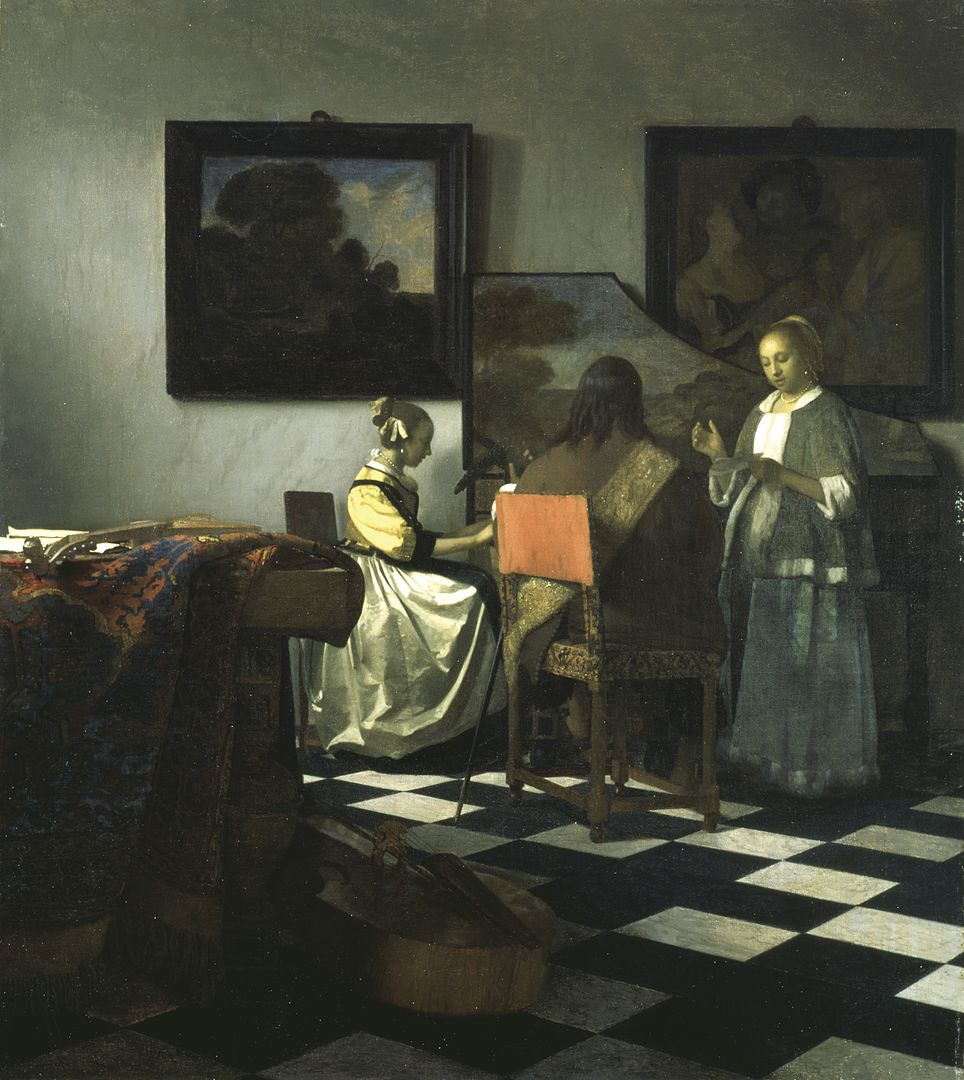
Was The Concert painting ever found?
The story of “The Concert,” one of Johannes Vermeer’s most celebrated paintings, is as intriguing and mysterious as any crime thriller. This 17th-century masterpiece has captivated art lovers for centuries, not just for its delicate portrayal of music and domestic intimacy but for the enigma surrounding its theft. What happened to “The Concert,” and was it ever found? This is the tale of one of the greatest unsolved art heists in history.
A Masterpiece by Vermeer
Johannes Vermeer, a Dutch Baroque painter, created only 34 known works during his lifetime, making each piece incredibly valuable. “The Concert,” completed around 1664, depicts three figures gathered around a harpsichord in a softly lit room. The painting is celebrated for its exquisite use of light, detail, and its subtle portrayal of music’s power to unite people. Before its disappearance, “The Concert” was part of the Isabella Stewart Gardner Museum’s collection in Boston, Massachusetts, housed alongside other world-renowned masterpieces.
The Fateful Night: March 18, 1990
On the night of March 18, 1990, Boston was quiet as the city celebrated St. Patrick’s Day. In the early hours of the morning, two men disguised as police officers approached the Gardner Museum. Claiming they were responding to a disturbance, the men were granted entry by the museum’s guards, a decision that would prove catastrophic. Once inside, the impostors overpowered the guards, tied them up, and embarked on an audacious heist.
Over the next 81 minutes, the thieves stole 13 pieces of art, including “The Concert,” Rembrandt’s “The Storm on the Sea of Galilee,” and Edgar Degas’ sketches. The combined value of the stolen works was estimated at $500 million, making it the largest art theft in history. The thieves’ methods were brazen yet unsophisticated: they cut the paintings from their frames, leaving jagged remnants as haunting evidence of their crime.
The Investigation
The theft sent shockwaves through the art world and prompted a massive investigation. The FBI, art historians, and private investigators scoured for clues, but the trail quickly grew cold. Despite numerous tips, sightings, and theories over the years, no arrests were made, and none of the stolen artwork was recovered.
“The Concert” became a symbol of this unsolved mystery. Its absence left a void not only in the Gardner Museum but also in the cultural and artistic landscape. The museum still displays the empty frames of the stolen paintings as a poignant reminder of the loss.
Theories and Leads
Over the decades, numerous theories have emerged about the theft and the fate of “The Concert.”
1. Private Collectors
Some theory suggests that the artwork was stolen for a private collector, someone wealthy enough to commission such a crime but willing to keep the treasures hidden indefinitely. This idea, often romanticized in popular culture, underscores the dark allure of stolen art.
2. The Art May Have Been Destroyed
A more somber possibility is that the paintings, including “The Concert,” were inadvertently destroyed or lost. Art theft is not always the work of sophisticated criminals; stolen works are sometimes mishandled, leading to irreparable damage.
Renewed Efforts
Despite the passage of time, the search for “The Concert” and its companions continues. The Isabella Stewart Gardner Museum has offered a $10 million reward for information leading to the recovery of the stolen artwork, the largest reward ever offered by a private institution.
In recent years, advances in technology and renewed interest in cold cases have breathed new life into the investigation. Law enforcement agencies have reexamined old evidence, and the museum has launched campaigns to keep the public engaged. The hope remains that “The Concert” might one day resurface.
Cultural Impact
The theft of “The Concert” has inspired numerous books, documentaries, and even fictionalized accounts in movies and television shows. The story’s blend of high art, crime, and mystery has captured the imagination of people worldwide. It serves as a stark reminder of the fragility of cultural heritage and the lengths to which people will go to possess beauty.
Was “The Concert” Ever Found?
As of now, “The Concert” remains missing. Its absence is deeply felt, not only by the Gardner Museum but by art enthusiasts and historians globally. The empty frame that once held Vermeer’s masterpiece hangs on the museum’s wall, a silent plea for its return and a symbol of hope that the mystery will one day be solved.
A Glimmer of Hope
Art has a remarkable ability to endure. History has shown that stolen masterpieces can resurface years, even decades, after their disappearance. The recovery of pieces like Gustav Klimt’s “Portrait of Adele Bloch Bauer I” and Edvard Munch’s “The Scream” offers hope that “The Concert” might one day find its way back to the Gardner Museum.
Until then, the story of “The Concert” remains one of art’s greatest mysteries, a tale of loss and longing, and a testament to the enduring power of human creativity. The world waits with bated breath for the day Vermeer’s luminous masterpiece is found and restored to its rightful place.




